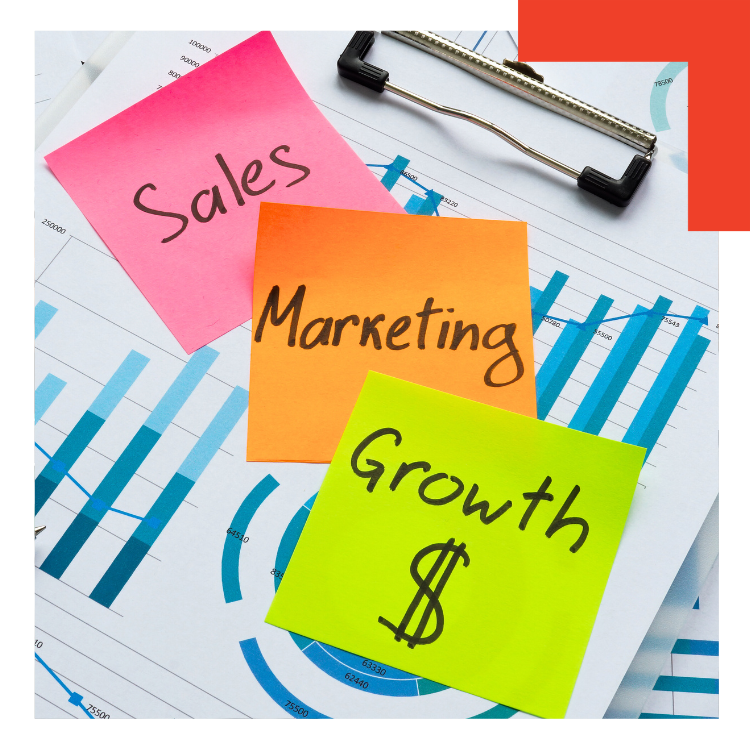Rethinking Marketing Metrics: Why a Singular Focus on ROI May Be Holding You Back
Heading into this year, supply chain marketers indicated that they are feeling the pressure to prove the value of their efforts more than ever before.

Our recent survey report reveals a significant year-over-year increase in the focus on demonstrated ROI as a key metric, rising from 12% to 25% between Q4 2022 and Q4 2023. This shift highlights the growing importance of measuring results and communicating marketing’s impact on pipeline and revenue to secure budget and support from leadership.
The Rise of ROI-Focused Metrics
Our survey findings reveal that supply chain marketers are increasingly prioritizing metrics such as Demonstrated ROI, Increasing Overall Revenue, Opportunities Generated, and Conversions. To help make sure you’re effectively measuring ROI, we created this helpful list of do’s and don’ts:
Do |
Set clear, measurable goals aligned with business objectives |
Identify key performance indicators (KPIs) that directly contribute to these goals |
Implement tracking mechanisms to monitor progress and gather data |
Regularly analyze and report on results to demonstrate marketing’s impact |
Don’t |
Waste too much time with strategies and measurements that don’t ladder up to business goals |
Neglect to set specific, measurable targets for your marketing efforts |
Rely on vanity metrics that don’t provide meaningful insights into marketing’s impact |
Fail to put in place a way to assess and adjust your strategies based on data-driven insights regularly |
Now that we’ve covered the do’s and don’ts of measuring ROI, let’s take a closer look at how specific content marketing metrics can help you gauge the effectiveness of your campaigns and make data-driven improvements.
Content marketing metrics can be divided into two main categories: ROI-driven metrics and engagement metrics. ROI-driven metrics, such as lead generation, MQLs, SQLs, and conversion rate, directly contribute to revenue and demonstrate the business impact of your content. On the other hand, engagement metrics, like organic traffic, time spent on page, bounce rate, social shares, and subscriber growth, provide valuable insights into how well your content resonates with your target audience.
ROI-Driven Metrics:
- Lead generation: Track how many leads you’re generating through content-specific CTAs like form submissions or newsletter sign-ups. This will help you gauge how effectively your content is attracting potential customers.
- Marketing Qualified Leads (MQLs) and Sales Qualified Leads (SQLs): These metrics take lead generation a step further by tracking the number of leads that meet specific criteria for being more likely to convert, helping you assess the quality of the leads your content is bringing in.
- Conversion rate: This tells you the percentage of leads that actually convert into customers, allowing you to see just how much your content is contributing to revenue generation.
Engagement Metrics:
- Organic traffic: This tells you how many visitors are finding your content through search engines. It’s a great indicator of how relevant and appealing your content is to your target audience. If your organic traffic is high, you know you’re doing something right!
- Time spent on page: Want to know if your content is engaging enough to keep readers hooked? Look at the average time spent on each page. If people are sticking around, it’s a good sign that they find your content valuable and interesting.
- Bounce rate: This metric shows you the percentage of visitors who leave your site after viewing only one page. A high bounce rate could mean that your content isn’t quite meeting your audience’s expectations or needs. Keep an eye on this one and adjust your strategy if needed.
- Social shares and engagement: Are people sharing your content on social media platforms? Are they liking, commenting, and engaging with it? These metrics give you a sense of how well your content resonates with your audience and whether it has the potential to go viral.
- Subscriber growth: Are more people subscribing to your blog, newsletter, or other content channels over time? If so, it’s a clear sign that your audience appreciates what you’re putting out there and wants to stay engaged with your brand.
While some metrics, like conversion rate and lead generation, have a clear and direct impact on ROI, others, such as time spent on page and social shares, may not immediately translate to revenue. However, these engagement metrics are still crucial for honing your message and creating content that resonates with your target audience. By consistently monitoring and analyzing these metrics, you can make data-driven tweaks to your content strategy, which will eventually lead to better conversions and a higher ROI.
It’s all about finding the right balance between optimizing for engagement and driving tangible business results. Remember, creating compelling content that captures your audience’s attention is the foundation upon which you can build a successful content marketing campaign that generates real returns. Which brings us to our next point – the intrinsic value of a holistic approach to marketing (although it requires a mix of data + storytelling).
The Importance of a Holistic Marketing Approach
While measuring ROI and tracking key metrics are essential for demonstrating marketing’s impact, it’s crucial not to lose sight of the broader, more strategic aspects of marketing. A holistic approach that balances data-driven decision-making with creative, long-term thinking is necessary for building a strong brand, establishing thought leadership, and staying top-of-mind with potential customers.
To implement a holistic marketing strategy, supply chain marketers should focus on developing a strong brand identity and messaging that resonates with their target audience. This involves creating high-quality content that addresses the needs and pain points of potential customers and strategically distributing that content across relevant channels to maximize reach and engagement.
Supply chain marketers must also prioritize continuous relationship-building with their target audience through consistent, value-driven interactions that nurture trust and establish the company as a reliable resource in the industry. While these efforts may not always yield immediately measurable results, they are critical components of a comprehensive marketing strategy that drives sustainable growth.
Balancing Measurable Results and Strategic Marketing
Supply chain marketers must strike a balance between data-driven decisions and creative, long-term thinking by allocating resources to both short-term, ROI-focused initiatives and long-term, brand-building efforts.
Regularly assessing the performance of marketing initiatives using ROI-driven and engagement metrics is crucial for making informed decisions and adjusting strategies as needed. It’s equally important to communicate the value of both measurable results and strategic initiatives to key stakeholders to ensure continued support and investment in marketing efforts.
Supply chain marketers must continuously adapt to the evolving needs and preferences of their target audience. By staying attuned to industry trends and customer feedback, marketers can refine their strategies and create content that resonates with their audience on a deeper level.
Advice for Proving and Communicating Marketing's Impact:
In addition to quantitative data, supply chain marketers should leverage compelling narratives and case studies to communicate the value of strategic initiatives that may not have immediately measurable results. By combining data-driven insights with powerful storytelling, marketers can paint a more comprehensive picture of their efforts’ impact and secure the support needed to continue driving results.
Collaborating with sales and other departments is also crucial for aligning efforts and demonstrating marketing’s contribution to overall business success.
While the pressure to demonstrate ROI is higher than ever, supply chain marketers must not lose sight of the importance of a holistic marketing approach that balances measurable results with strategic, long-term initiatives. At our agency, we work closely with our clients to help them craft the data points and stories that effectively communicate the value of their marketing efforts to their leadership teams, aligning these narratives with overall business goals.
We firmly believe that marketing is both an art and a science, requiring a delicate balance between short-term ROI and long-term brand building. By embracing this philosophy and continually adapting to the evolving needs of the supply chain industry, we help our clients navigate the ever-changing landscape of modern marketing, empowering them to achieve lasting success in an increasingly competitive industry.
Discover more insights regarding martech adoption, industry objectives, challenges, and opportunities in our 2024 Supply Chain Marketing Industry Outlook and Trends Report. You’ll find more enlightening statistics about the industry’s top pain points, tactics, team, and budget size, empowering you to make data-driven decisions and optimize your marketing efforts for success in the years ahead.
Interested in the Full Report?
Click the button below to access more information about the survey.



